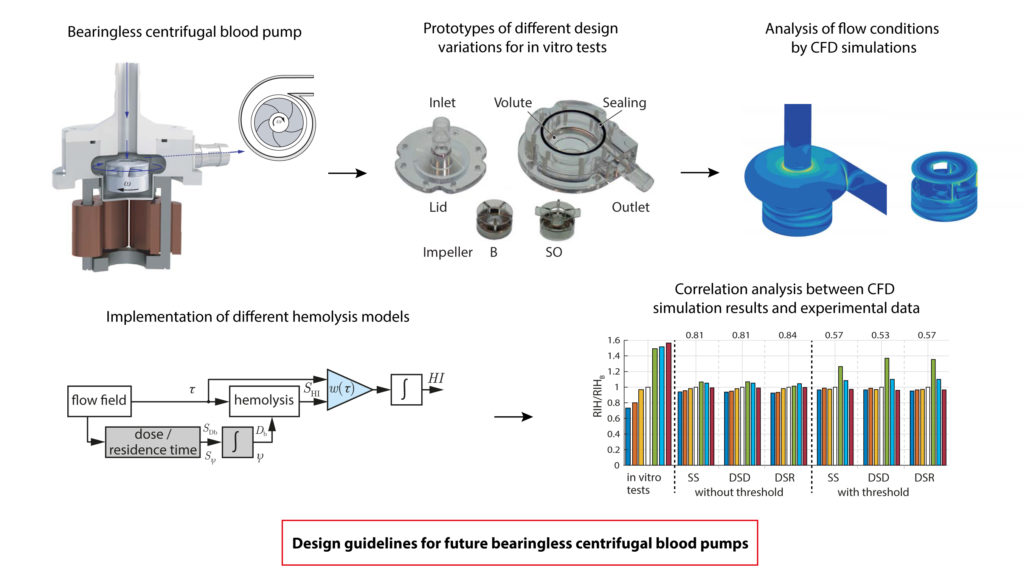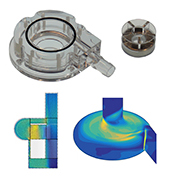
High cell compatibility is a key objective for the design of blood pumps. Due to the absence of narrow fuel gaps, in which high relative velocities occur, a bearingless centrifugal pump design is capable of achieving low hemolysis generation. This paper presents a comparative study of computational fluid dynamic (CFD) simulations and in vitro hemolysis examinations of such blood pumps. The outcomes of the in vitro study are analyzed with the help of CFD hemolysis models. Ten different pump prototypes were manufactured and tested. Each design was implemented in a CFD framework and simulated with different Eulerian hemolysis models. The outcomes are compared to experimental data. The model achieving the highest correlation is used to explain the in vitro outcomes in detail. It is shown that a double-stage model achieves the best correlation. The sensitivity of the simulation is considerably lower than that of in vitro tests. The CFD model reveals that most of the cell destruction is caused in the radial gap of the pump. Further critical regions are the bottom volume and the shroud clearance gap. Only 0.5% of the priming volume is subject to overcritical shear stress. CFD models provide valuable insights regarding the cell damage effects and help to further improve the design of future pumps. The cell compatibility can be improved by increasing the radial gap, lowering the shroud and hub clearance gaps, and increasing the fillet radius of the inlet nozzle.

